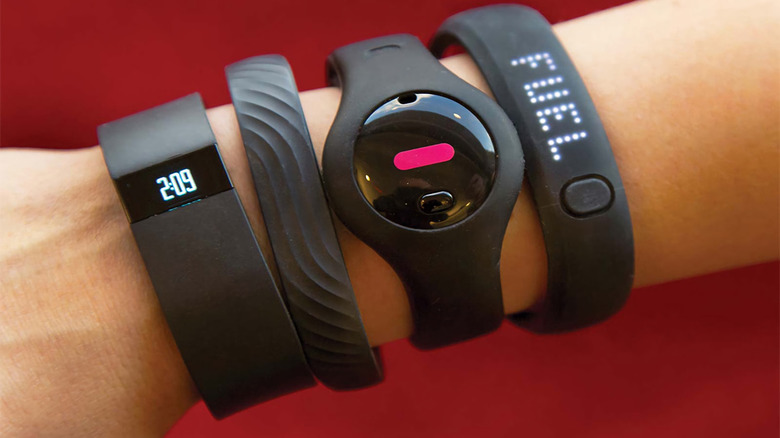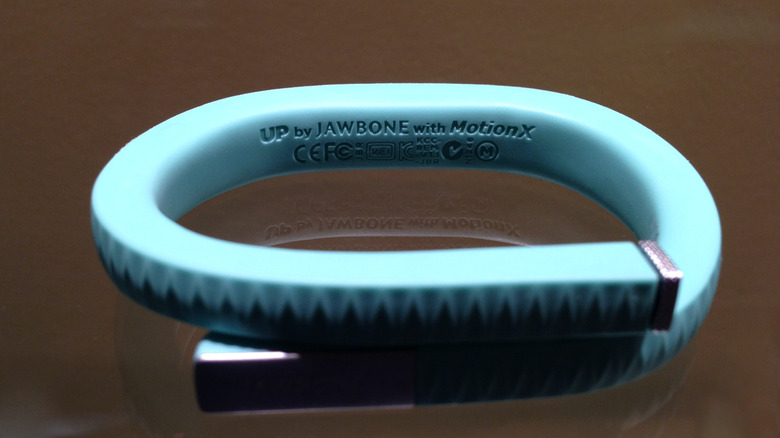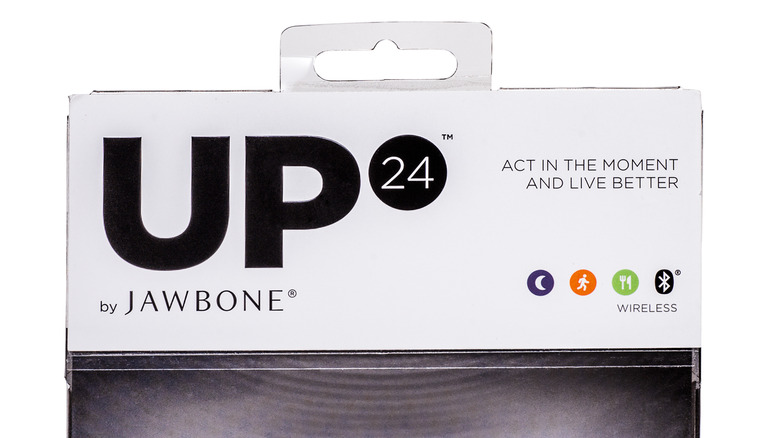This Device Turned A Once-Promising Startup Into A Vaguely Remembered Tech Flop
It's hard out here for a startup. New tech companies have to clear every hurdle of bringing a fresh product to market, without any of the customer goodwill or establishment inertia of well-known brands. Many startups address marketplace challenges by delivering an exciting new product or service, counting on the appeal of innovation to overcome customer reluctance. Sometimes, that kind of innovation can lead to thrilling new tech. Other times, it tries to sell you a screaming carpet.
Like many startups, Jawbone fell somewhere in between. Jawbone's core offerings were comparatively straightforward: the company sold Bluetooth headsets, portable speakers, and a variety of health-related wearable monitors. Had events broken just a little differently, Jawbone could be a major presence in the manufacturing of peripherals. In particular, it was one of the earliest players in the wristband health monitor business.
Ironically, Jawbone's early arrival with health wearables partly spelled its doom. Here's how it all went down.
[Featured image by Abas Gemini via Wikimedia Commons | Cropped and scaled | CC BY-SA 3.0 ]
Too old to be new and vice versa
As Forbes notes, Jawbone started out as a maker of wireless peripherals and speakers. The devices performed well: SlashGear gave the ICON Bluetooth headset a positive review back in 2012 and gave their wireless speakers a nod in our holiday gift guide for that year. We found Jawbone consistently delivered solid third-party peripherals for smartphones, generally characterized by comparatively high prices justified by comparatively good performance. Had Jawbone continued on that basis, they might still be operating today.
Jawbone wasn't content to rest on its laurels, however. The company bought into the wearables marketplace early and extensively, committing much of its funding and labor to the development of the Jawbone UP, an early example of a wristband health monitor. Released in late 2011, the UP played nice with both Android and iOS within its first few years on the market, making it an option for virtually any health-minded smartphone user.
[Featured image by Arthbkins via Wikimedia Commons | Cropped and scaled | CC BY-SA 3.0 ]
Fighting with bigger kids
Even in its early years, however, Jawbone showed some flaws. The company had to remix the first iteration of the UP wristband twice before delivering a full-featured product in 2013. In the same year, its MyTALK headset software suffered a significant hack.
Still, Jawbone peripherals showed solid buy-in for the time and the company could likely have weathered those storms. Instead, it picked a fight. Even as it upgraded its tech, it struggled for the necessarily limited space on its customers' wrists. Established brands like Fitbit and later Apple and various Android brands already occupied much of that real estate. The fight got ugly, with lawsuits fought throughout the 2010s between Jawbone, Fitbit, and Singapore-based manufacturer Flex. Serious accusations followed, from Fitbit accusing Jawbone of plagiarism to Jawbone blasting Fitbit for supposedly poaching employees. One judge even called out Jawbone for pursuing "a monopoly on the abstract ideas of collecting and monitoring sleep and other health-related data."
In the end, Jawbone just wasn't up to the legal, financial, and competitive pressure it was under. The company put its speaker business up for sale in 2016, with its wearables business following it to oblivion in the following year. Despite brief talk of pivoting the Jawbone brand to clinical health devices, Jawbone is defunct as of 2023.


